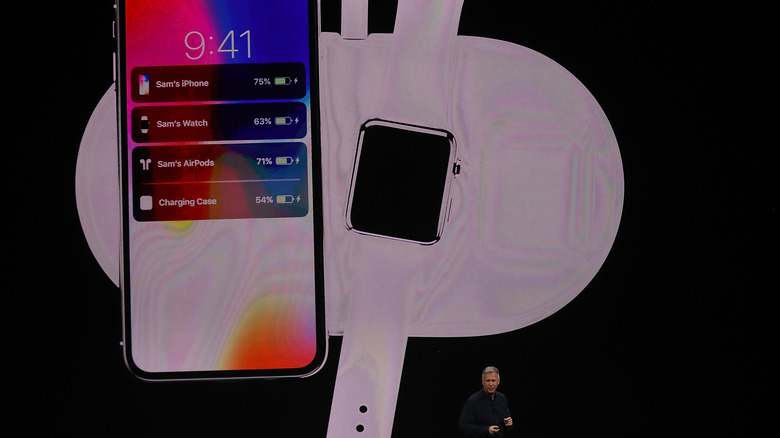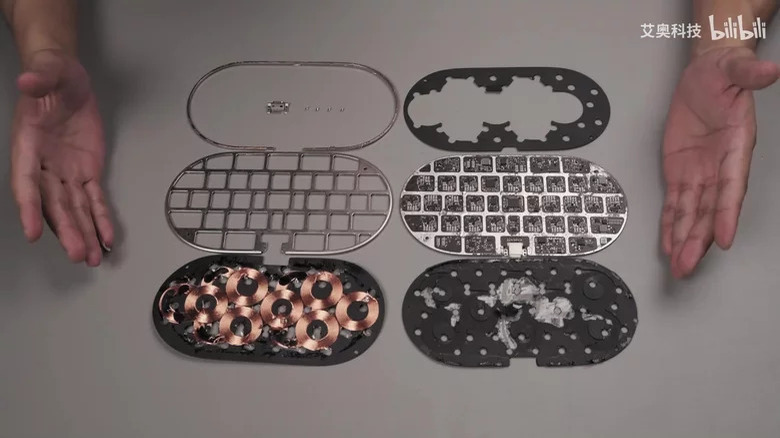Whatever Happened To Apple's AirPower Wireless Charger?
Apple has a stellar reputation for making some of the most successful consumer electronic products in history. These include the Apple II, the iPod, iPhone, iPad and Watch. However, it has also had its fair share of failures too. Spectacular implosions included antennagate, bendgate, bendgate 2.0, along with the butterfly keyboard fiasco and more recently the very public AirPower Wireless Charger fail.
What made the AirPower fail a little bit differently from some of Apple's other disasters is that the company publicly unveiled it in 2017 alongside its all-new iPhone X flagship smartphone, but well ahead of its availability. The AirPower charging mat was supposed to showcase the new wireless charging capabilities of the iPhone X and the iPhone 8 (launched at the same event), along with what was then a new wireless charging case for Apple's AirPods (via MacRumors). What was to set the AirPower apart from competing charging mats at the time was a wider charging area, the ability to charge three devices at once, and the ability to intelligently relay to an iPhone the various charging levels of the devices via a widget (via Pocket-lint).
Was it vaporware?
Apple isn't usually a company that we associate with vaporware — a product that has been announced or advertised but doesn't materialize for customers to purchase. However, that is exactly what happened with the AirPower wireless charging mat. While it was unveiled in late 2017, it wasn't until March 2019 that Apple finally admitted failure. Apple's then-SVP of hardware engineering, Dan Riccio, took the fall and explained in a statement that "after much effort, we've concluded AirPower will not achieve our high standards and we have canceled the project" (via TechCrunch). Of all the devices to fail so spectacularly, it is hard to imagine that something as seemingly humble as a charging mat could trip up a high-tech company with Apple's reputation for advanced engineering.
Although the reason for why AirPower failed was made public, the rumor mill pointed to issues with overheating and potentially related safety concerns as a result (via Sonny Dickson). Although Qi wireless charging is very popular, it can sometimes take a little positioning and repositioning on a charging mat to get a proper alignment. According to Forbes, Apple was trying to overcome this issue by using multiple charging coils that overlapped, but this, coupled with the fact that the Apple Watch uses a proprietary charging system, meant that the device quickly became far too complex to tame. Although there have been rumors that Apple could revive the AirPower, nothing has yet surfaced, and those rumors seem to have quickly faded. With numerous third-party charging solutions for multiple Apple devices now on the market, it doesn't seem likely that Apple will pour the energy and resources into making its original concept a reality.

